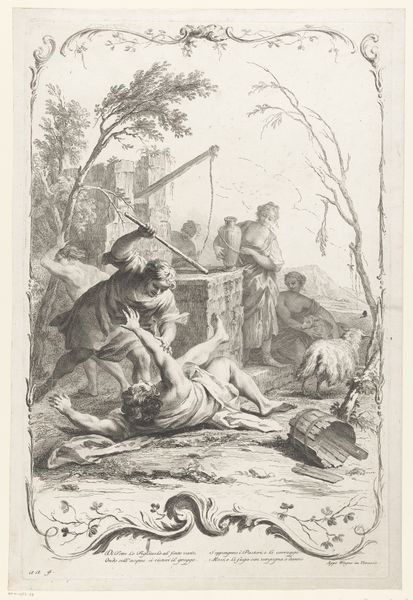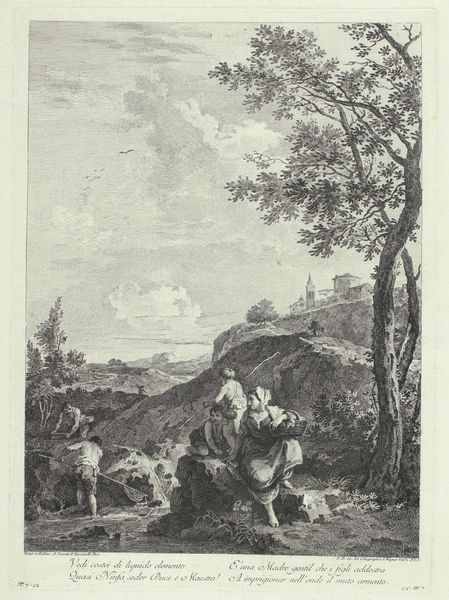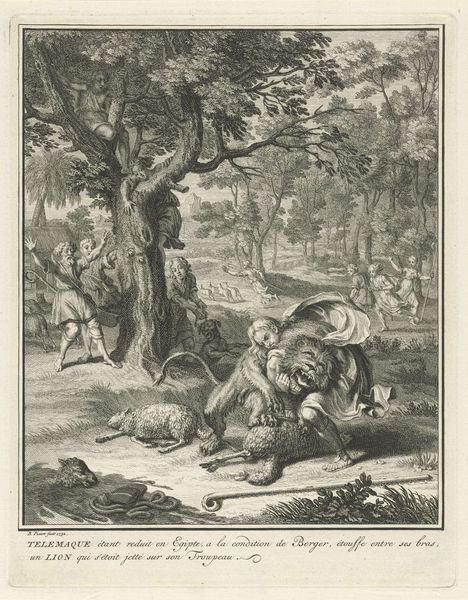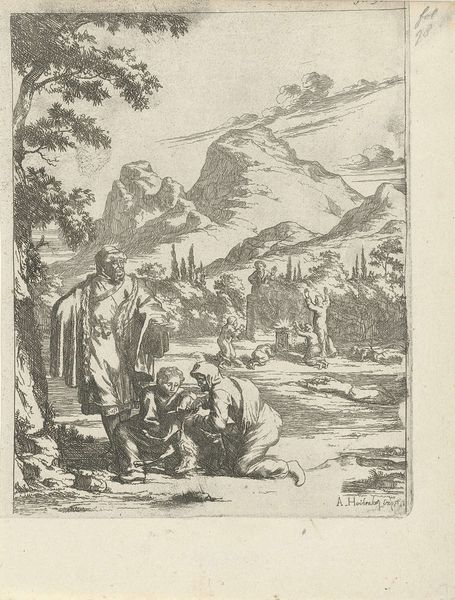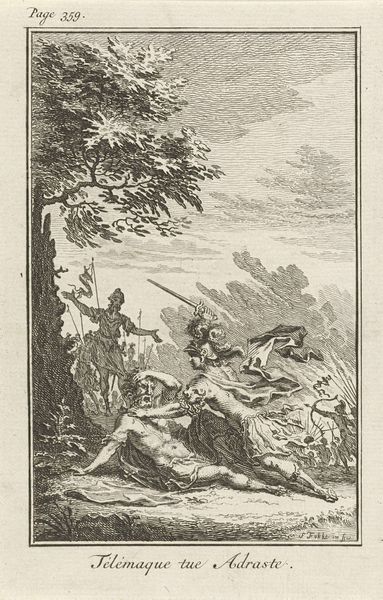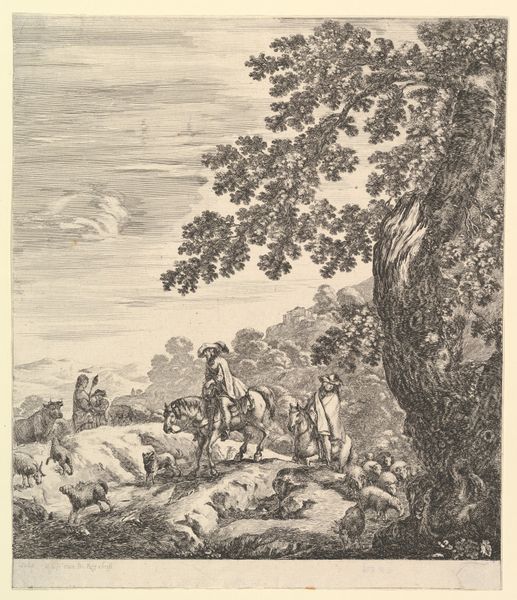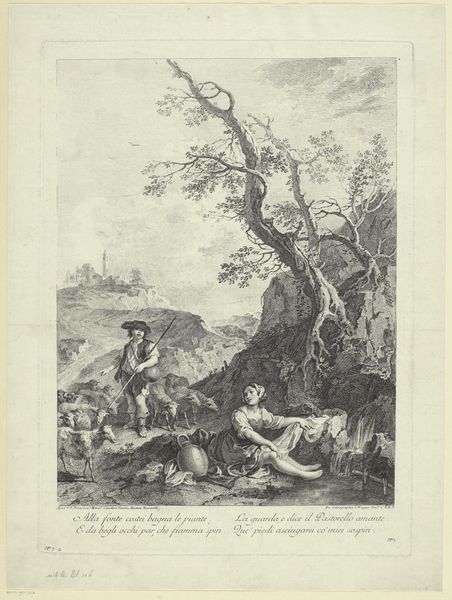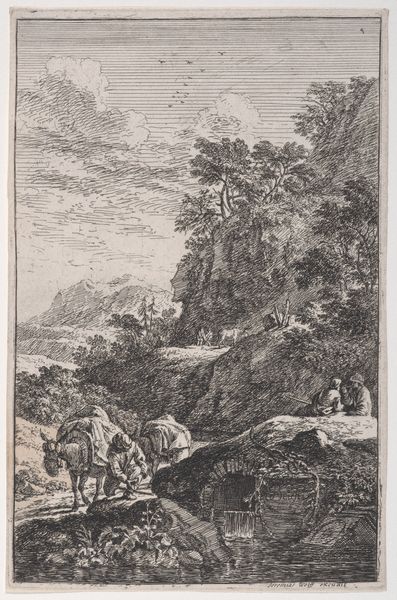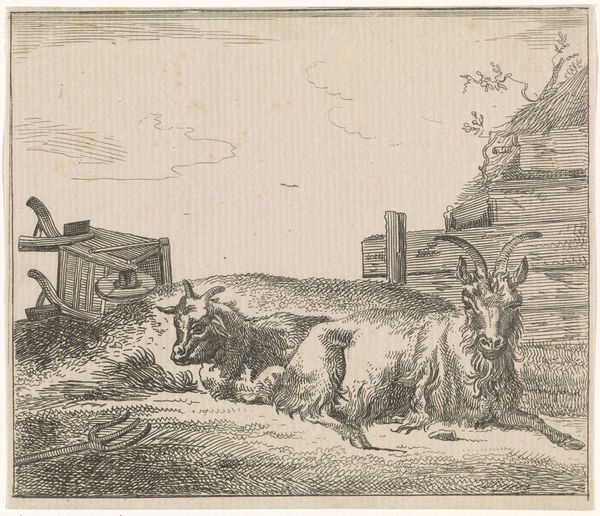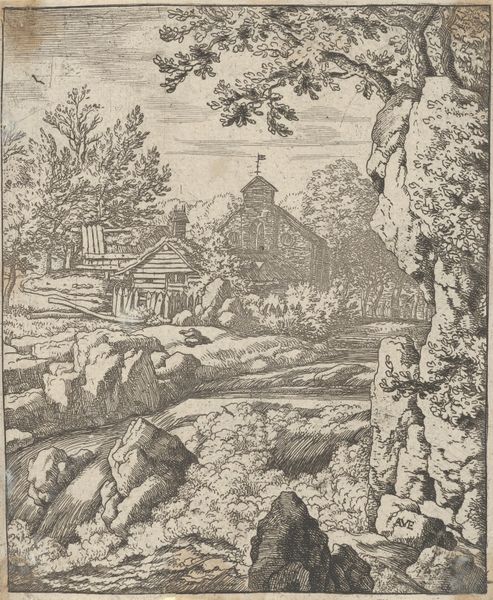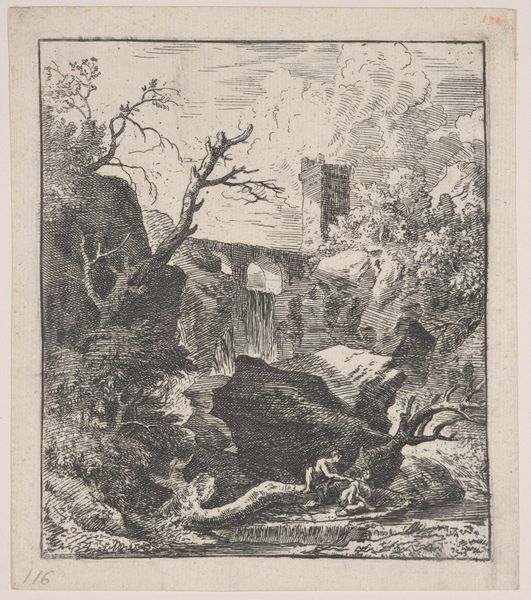
drawing, paper, ink, pen
#
drawing
#
baroque
#
landscape
#
figuration
#
paper
#
ink
#
pen
#
genre-painting
#
realism
Dimensions: height 238 mm, width 195 mm
Copyright: Rijks Museum: Open Domain
Curator: Today, we are observing "Herder en een herderin," or "Shepherd and Shepherdess," a pen and ink drawing on paper attributed to Barent Gael, created sometime between 1640 and 1673. Editor: It’s wonderfully calm, isn't it? There’s a sense of rural quietude. The composition draws me right in; the figures relaxing by a ramshackle structure nestled in the landscape. Curator: Absolutely. Gael's choice of pen and ink as his media reveals much about the accessibility of art production at that time. These materials were common, and inexpensive, allowing artists a means to create scenes that reflected daily life, thus connecting the artist to a wider audience via relatable subject matter. Editor: And observe how the shepherd and shepherdess are tending not just their flock, but also several dogs, underscoring a pastoral harmony and, dare I say, evoking an Arcadian ideal, though with more earthy realism than myth. Look at the expressions, so carefully wrought—contentment is clear. Curator: True, the quotidian is ennobled by these visual devices. Also consider that during the Baroque era there was growing interest in rural genre scenes. Drawings like these were a way of documenting and perhaps even romanticizing labor practices tied to the land, like herding. It shows changing urban consumer values looking back to what they perceived to be a simple, hard working way of living. Editor: The symbols tie into cultural memory, linking it to themes of leisure, labor and harmony that speak across generations. I think this composition captures an idealized, simpler lifestyle that has resonated through art history. The pen and ink, while simple, allows a great depth to the landscape and the quiet interaction with these animals. Curator: Well said. And ultimately, thinking of process, these simple materials make art accessible not only in its creation, but also in its dissemination through copies and prints, thus increasing their overall cultural value and impact. Editor: So, as we conclude, the image's power isn't just in its bucolic beauty but also in the cultural dialogue about human labor and our relationship with nature and animals. Curator: Precisely. And the drawing invites us to consider the historical relationship between accessible materials and popular representations of everyday life.
Comments
No comments
Be the first to comment and join the conversation on the ultimate creative platform.
